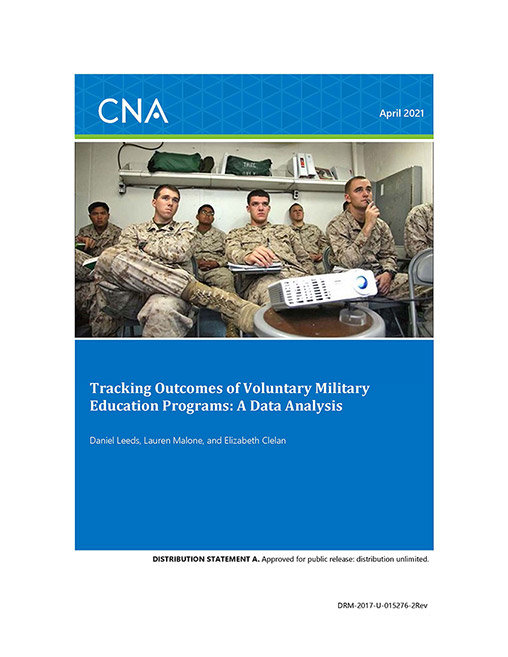The Department of Defense (DOD) provides educational benefits to Servicemembers and their spouses that are aimed at easing the financial burden of continuing education. The two primary programs are Tuition Assistance (TA) and My Career Advancement Account (MyCAA). All Services provide the same TA benefits: up to $250 per semester credit hour up to a maximum of $4,500 in tuition per fiscal year (FY). The complementary program to TA for military spouses is MyCAA, which is available for spouses of Servicemembers in paygrades E1–E5, O1–O2, or W1–W2, provided the Servicemember is serving on active-duty Title 10 orders. MyCAA is primarily viewed as a workforce development program that helps military spouses obtain the licenses and education necessary for employment in portable career fields and occupations.
The 2014 DOD Appropriations Bill mandated a study tracking the outcomes of those who receive either Tuition Assistance (TA) or My Career Advancement Account (MyCAA). The metrics requested by Congress included the graduation rate, the number of program participants, the number of courses taken per participant, the course completion rate, and the average cost per course (both to the TA program and to the Servicemembers/spouses). In this report, we present tables containing the statistics necessary to satisfy the congressional requirement and discuss some revealing differences across Services and over time.
There are a few important caveats regarding the comparability of numbers across the Services. First, management controls, which vary by Service, often limit the number of courses that a Servicemember can take, especially in his or her first year. As a result, the average number of courses taken per Servicemember might not be directly comparable across the Services if the limits on first-year or later courses vary by Service. Second, Army and Air Force data contained specific fields for certificates and for degree types, whereas the Navy and Marine Corps data had free entry fields for the type and/or level of degree earned. As a result, these two Services include degrees at a wider range of levels. Third, the Army has noted that there are discrepancies between the Army data we report and similar data generated by the Army Continuing Education System (ACES). The ACES data include all grades officially submitted, whereas if the same course is taken on multiple dates, we keep the dates associated with the course for which the Servicemember received the highest grade. If, however, a grade was later changed—thus resulting in multiple grades for the same course—and the more recent entry was the correct entry, then our data would not accurately reflect that change. Finally, our TA data do not include students who take courses solely through the Community College of the Air Force (CCAF), or other Service-provided institutions, for that matter. Airmen are able to take CCAF courses free of charge and, as such, do not use TA to fund their enrollment in these courses. As a result, CCAF course completions, degree completions, and other metrics are not part of the TA and MyCAA data provided throughout this report.
With these caveats in mind, the following general findings emerge from our analysis of Servicemembers’ and their spouses’ use of TA and MyCAA benefits:
- The Army had the highest number of TA participants, followed by the Air Force, Navy, and Marine Corps. This coincides with the size of each of the Services, including active, reserve, and guard components.
- TA costs were fairly similar across the four Services, although generally higher at both types of private institutions (profit and not-for-profit) than at public institutions.
- In recent years, participants have taken fewer courses at public institutions than at both types of private institutions, and first-year TA and MyCAA users took fewer courses than the average users.
Similar findings emerge in our analysis of the number of credits earned per participant, the number of courses completed, course completion rates, the number of degrees completed, and the graduation rate. That is, all are higher at both types of private institutions than at public institutions and lower among first-year users than their later-year counterparts.
Course completion rates are slightly higher in the Air Force and Marine Corps than in the Army or Navy; in fact, course completion rates were highest in the Air Force in each educational sector.
Note, however, that these are only summary statistics and have not controlled for differences in participants’ characteristics or in the quality of institutions attended.
Download reportDISTRIBUTION STATEMENT A. Approved for public release: distribution unlimited. Public Release.
Details
- Pages: 106
- Document Number: DRM-2017-U-015276-2Rev
- Publication Date: 4/30/2021
